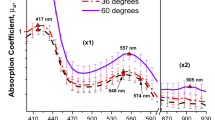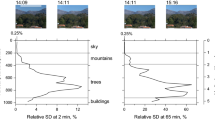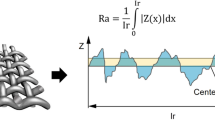Abstract
TEMPERATURE and texture have both been suggested as possible normal explanations of the ‘skin-vision’ phenomenon1. Neither of them explains Russian claims of perception at a distance (claims not supported by Barrett and Rice-Evans2 using a low level of illumination); however, they do provide potential cues in situations where touch is involved. Colourants may give surfaces with characteristic textures and the colour of a surface will affect the amount of heat it absorbs. Recently, Buckhout3 found that, even with illumination provided by a 40-W bulb (a good source of infrared radiation), out of 80 subjects not one could distinguish between 10 colours in 90 presentations. He controlled texture by covering the colours with a thin layer of plastic. In the experiment reported here I investigated what part both texture and temperature might play in a very simple situation: that of a black–white discrimination.
This is a preview of subscription content, access via your institution
Access options
Subscribe to this journal
Receive 51 print issues and online access
$199.00 per year
only $3.90 per issue
Buy this article
- Purchase on SpringerLink
- Instant access to full article PDF
Prices may be subject to local taxes which are calculated during checkout
Similar content being viewed by others
References
Liddle, D., Discovery, 25, 22 (1964).
Barrett, S. M., and Rice-Evans, P., Nature, 203, 993 (1964).
Buckhout, R., Percept. Mot. Skills, 20, 191 (1965).
Author information
Authors and Affiliations
Rights and permissions
About this article
Cite this article
FRENCH, C. Tactile-vision: Thermal and Texture Cues in the Discrimination of Black and White. Nature 208, 1352 (1965). https://doi.org/10.1038/2081352a0
Published:
Issue date:
DOI: https://doi.org/10.1038/2081352a0



